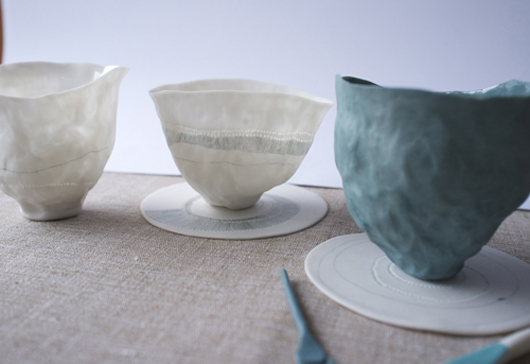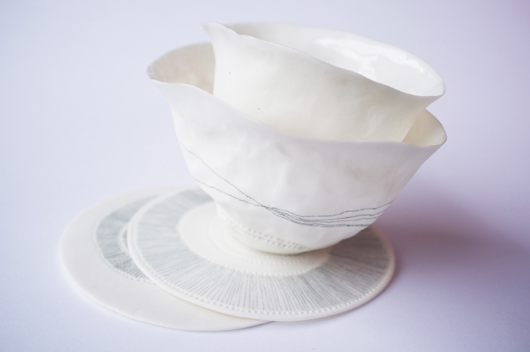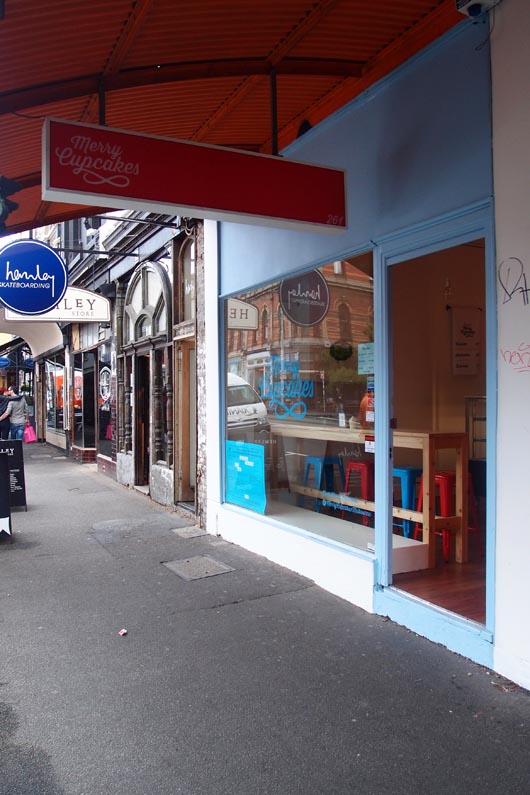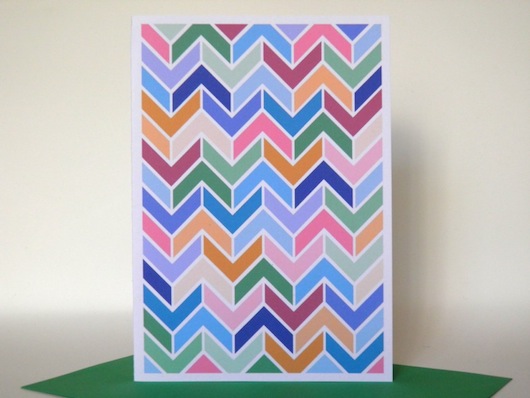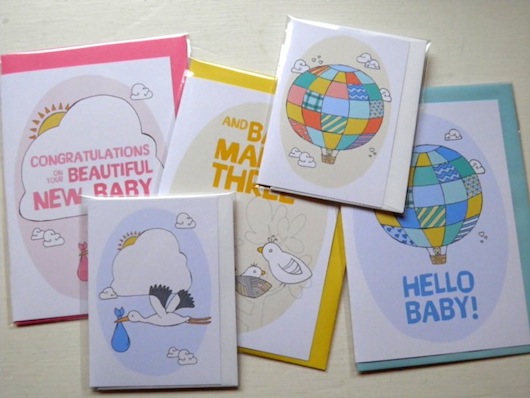Scenes From Sydney: Collaboration
By Jaclyn Carlson When it comes to building your business, your career, your blog, or simply boosting your network of contacts – I’m a big believer in the power of collaboration.
By embracing partnerships and teaming up with others we are able to improve, transform and implement ideas that may otherwise have gone unrealized. Personally, I have loved the experience of collaborating with someone else in order to achieve a project or grow an idea beyond what I could have done with it on my own. The first step towards any collaboration is putting yourself out there and connecting with others. Summer in Sydney is the best time to start as the city is bursting with events and workshops that will educate, inspire and ultimately connect you with other like-minded individuals.
Here are a few local groups that I encourage you to check out and that routinely host events for creative types…
- ABCD Meet-Up - A blogger meet-up that is both casual and fun
- Social Media Women – a monthly networking series with well-known speakers
- Creative Mornings Sydney – a monthly breakfast lecture series for creative types
- ISCD (International School of Colour & Design) – workshops & events available to students and the public
Originally from Boston, Massachusetts, Jaclyn Carlson is the author behind the Sydney-based blog, Little Paper Trees. When not documenting her expat adventures, she can be found working for one of Australia’s top design & homewares trade shows. Passionate and prone to wasting hours on Pinterest, she has years of experience in marketing, advertising and PR and aims to put Sydney’s creative women in the spotlight with her monthly column.
Tools of the Trade: Fiona McDonald of Ichimu
By Brianna Read The subject of this month’s Tools of the Trade brought up a rather interesting idea in the discussion of creative practice – rules. With every trade comes a history of how the practice has grown and moved with time, there are always long lists of the recognised methods of practice and an equally long list of things which ought not be done. This particular idea was touched upon in an earlier Tools instalment and I was glad for the opportunity to get a little further into the topic – you see I am an advocate of bending and breaking rules… I am making my subject sound rather rebellious which is actually not the case at all.
Fiona McDonald makes objects of porcelain – under the label Ichimu (translated roughly from Japanese meaning a dream, or a fleeting thing). Everything about Fiona’s creative practices are as gentle and light of hand as the name implies. The rule breaking I referred to was from an almost off-hand remark Fiona made about why her ceramic practice brings so much pleasure: ‘Maybe it is because I don’t really know the rules about clay and porcelain that I love it so much.’
I adore these types of honest insights as they reveal so much about why we create. During the interview Fiona made mention of her love of children’s illustrations (those done by children rather than for them) and her appreciation of the honesty they hold. Her remark about not knowing the rules of porcelain and the link this may have to her enjoyment of the process revealed that she found for herself in ceramics what she appreciated in the unfettered and unpretentious expressions of children’s creativity.
Take a look at her work in Ichimu and it is not difficult to see the pleasure taken in creating it. When I asked Fiona to interview for this column I presumed that the effortless beauty in her ceramics had been from years of labored study and crafting with the medium of porcelain. I had no idea Fiona’s background was in fact in graphic design and pattern design for textiles. Indeed, Fiona was introduced to the art of ceramics by a friend relatively recently.
I think it is precisely because of her recent introduction to the medium and an absence of formal training that Fiona’s work stands out. I love that the hand and marks of the tool can be seen in the work – these pieces have a physicality which speaks of their production. Of course, her knowledge of and practice in the visual arts can be seen in her ceramic work. Each piece is hand built using a variety of tools and found objects and the surface treatment and colour sensibility of each collection of pieces clearly displays her talent for design.
While I wholeheartedly appreciate mastery in any medium and understand that rules are made often for very sound reasons; whenever I encounter an artisan who blazes their own trail through a quagmire of dos and don’ts I am reminded of the very reason why creativity exists: because it brings pleasure to those who create and those who behold the results.
Yet another invaluable tool for the kit of any creative: the ability to shirk the rules when they are hampering the enjoyment of the creative process.
More of Fiona’s porcelain work at Ichimu can be seen here and here. Her textile and graphic works have online homes here, here and here.
Brianna Read is a designer/maker based in Melbourne. Her knitwear label Jack of Diamonds employs traditional hand-made techniques in combination with machine knit technologies. Brianna’s multi-faceted creative practice encompasses design, production, works for exhibition and machine knitting workshops.
Women in Art: It's all in the detail
By Lauren Treiser It’s hard to believe that artist, Natasha Bieniek, who is an upcoming star in the art world, is so young (even younger than me) and has achieved so much already. Last year, she won the $50,000 Metro Art Award and was placed runner up for the Doug Moran National Portrait Prize. She was also a finalist for the Archibald Portrait Prize in 2012. I attended her opening at Dianne Tanzer Gallery and was even lucky enough to meet the artist.
 Scarlet, 2012
Oil on wood
15 x 20cm
Scarlet, 2012
Oil on wood
15 x 20cm
Born in 1984 in Melbourne, Natasha Bieniek has been painting for ten years. Bieniek started her formal training at the VCA in 2002 where she began to concentrate on figurative painting.
The scale of the paintings are the first thing that caught my eye when walking into the gallery. The miniature portraits force the audience to get up close and personal with the work to study the detail. The size of the paintings are relevant to the way most of us view images today. In contemporary culture so much of what we see is miniaturized on our iPhone and iPad. So Bieniek’s work references both the digital era as well as historical miniature portraits before photography was invented. Historically, miniatures were kept of loved ones around ones neck and close to the heart. In Bieniek’s latest series the protagonists are her friends. By sharing these with us she is letting people in "so they feel as though they're witnessing events through a key hole", she said.
 Magenta, 2012
Oil on wood
15 x 20cm
Magenta, 2012
Oil on wood
15 x 20cm
Bieniek’s series is a departure from previous work which were self portraits. She hangs brightly features her friends in their own spaces. The artist does not direct what her sitters should do and rather photographs them in their natural environment. She then paints with oils using the photos as references. The detail is so small that the prerequisites must be a lot of patience and a very tiny brush! Each piece features a woman lying on, under or partly covered by material. The material is painted so perfectly that the work could almost be mistaken for a photograph.
 Hazel, 2012
Oil on wood
10 x 15cm
Hazel, 2012
Oil on wood
10 x 15cm
Bieniek said that she places as much emphasis on the material and objects around the sitters than the sitters themselves. No one of the subjects has greater importance. To me, the women look a little bit lost or forlorn, but the artist has previously stated that she likes to keep the works open for interpretation.
 Rose, 2011
Oil on wood
15 x 20cm
Rose, 2011
Oil on wood
15 x 20cm
Each work takes an average of one month to complete. The work is so small but in fact has such a big impact that it is really important to see these in real life (and not on the computer or iPhone).
 The Sisters, 2012
Graphite¸ carbon and charcoal on paper
43 x 56cm
The Sisters, 2012
Graphite¸ carbon and charcoal on paper
43 x 56cm
Becc Orszag is also exhibiting at Dianne Tanzer with her first solo exhibition. Her drawings are full of trickery and manipulation. She is evidentially a skilled draughtsman. Her work is full of kooky realism with references to instruction manuals and Russian communist posters all in a strange mix of landscape, portrait and performance.
 The Test Pool, 2012
Graphite and carbon on paper
43 x 56cm
The Test Pool, 2012
Graphite and carbon on paper
43 x 56cm
Both exhibitions' works are full of detail so take your time when viewing them and enjoy!
All images courtesy the Artist and dianne tanzer gallery + projects
Natasha Bieniek: She hangs brightly Becc Orszag Dianne Tanzer Gallery + Projects 20 October - 17 November 108 - 110 Gertrude Street
Lauren is graphic designer and founder of patchyrugs.com.au. She loves all things design (see her blog at blog.ilovelollies.net) and is particularly passionate about fine art, interior design and jewellery. Lauren is currently studying Gold & Silversmithing and doing graphic design on a freelance basis.
Bricks & Mortar: Merry Cupcakes
Merry Cupcakes is a brand new (and very cute) addition to Fitzroy’s busy Brunswick Street. It was launched by owner and baker-extraordinaire Mary Lin at the start of October, and is quickly becoming a popular spot to pick up a sweet treat (or two).

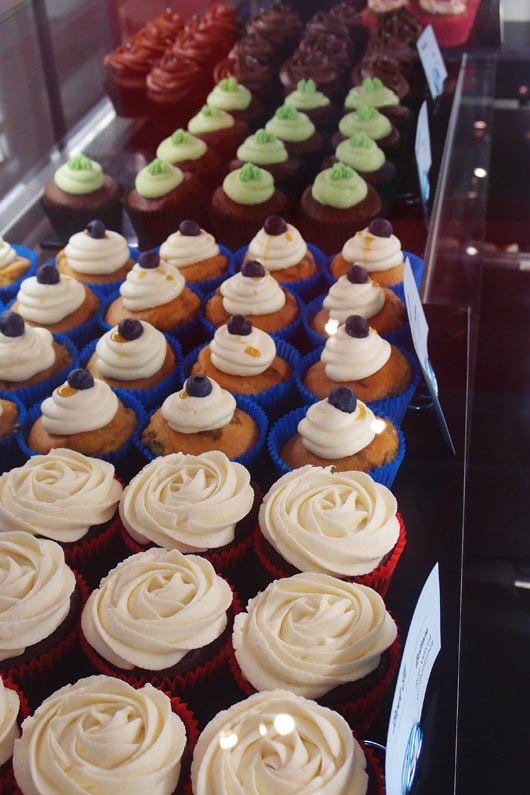 Mary studied nutrition and dietetics at university, and after graduating and not being able to find employment in the field, decided to start up her own business. With the help of her parents, who have strong business backgrounds, she found an empty Brunswick Street shopfront and brought friend Tim Cruickshank on board to design the branding and cafe fit-out (Mary’s only specifications were to incorporate her favourite colours, red and blue, and to make it cute). After working on her menu and launching with a successful preview night, where all of the cupcakes were sold within an hour and a half, Mary was ready to open up her doors.
Mary studied nutrition and dietetics at university, and after graduating and not being able to find employment in the field, decided to start up her own business. With the help of her parents, who have strong business backgrounds, she found an empty Brunswick Street shopfront and brought friend Tim Cruickshank on board to design the branding and cafe fit-out (Mary’s only specifications were to incorporate her favourite colours, red and blue, and to make it cute). After working on her menu and launching with a successful preview night, where all of the cupcakes were sold within an hour and a half, Mary was ready to open up her doors.
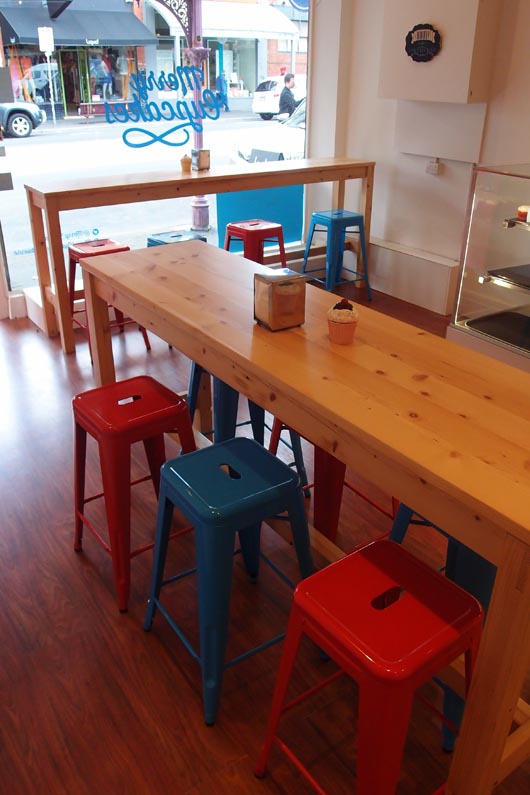
 Cupcakes and good nutrition might not initially go hand in hand, but through her studies Mary started learning how to modify recipes to make them healthier, and began to dabble and experiment in baking. Offering up a healthier alternative for those in search of a sweet treat is essentially what's at the heart of Merry Cupcakes, and so Mary uses a fraction of wholemeal flour, incorporates fruit and vegetables and uses less sugar, which means that her cakes are healthier and contain less saturated fat than regular cupcakes. All of Mary’s cupcakes are also vegan-friendly, and she has gluten-free recipes in the works too.
Cupcakes and good nutrition might not initially go hand in hand, but through her studies Mary started learning how to modify recipes to make them healthier, and began to dabble and experiment in baking. Offering up a healthier alternative for those in search of a sweet treat is essentially what's at the heart of Merry Cupcakes, and so Mary uses a fraction of wholemeal flour, incorporates fruit and vegetables and uses less sugar, which means that her cakes are healthier and contain less saturated fat than regular cupcakes. All of Mary’s cupcakes are also vegan-friendly, and she has gluten-free recipes in the works too.

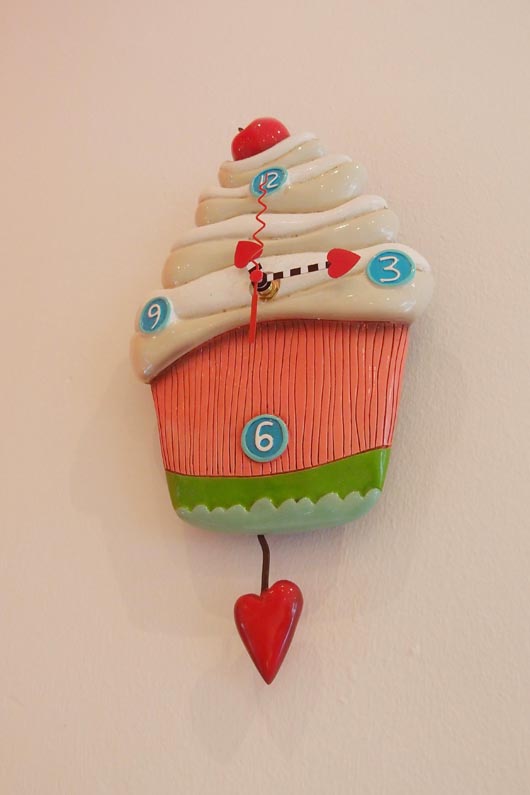 If you’re wondering whether this all means Mary’s cupcakes are less flavourful than their full-fat compatriots, you’d be very wrong. In the name of good, honest reporting my boyfriend and I sampled a couple of Mary’s cupcakes and I can assure you they were delicious (we tried ‘Beet It’, a red velvet cupcake made with beetroot and cream cheese icing, and ‘Strawberry Fields Forever’, a strawberry cupcake with strawberry buttercream). They were moist and rich, with very tasty icing. My mouth is watering just thinking about them.
If you’re wondering whether this all means Mary’s cupcakes are less flavourful than their full-fat compatriots, you’d be very wrong. In the name of good, honest reporting my boyfriend and I sampled a couple of Mary’s cupcakes and I can assure you they were delicious (we tried ‘Beet It’, a red velvet cupcake made with beetroot and cream cheese icing, and ‘Strawberry Fields Forever’, a strawberry cupcake with strawberry buttercream). They were moist and rich, with very tasty icing. My mouth is watering just thinking about them.
 Mary has plenty of flavours to choose from, but will also be changing up her menus every season and creating ‘event’ cupcakes every so often too (such as a pumpkin cupcake for Halloween). Event catering will also be available, so check Mary’s Facebook page for details (a website is also on its way soon) or pop by in person at 261 Brunswick Street, Fitzroy.
Mary has plenty of flavours to choose from, but will also be changing up her menus every season and creating ‘event’ cupcakes every so often too (such as a pumpkin cupcake for Halloween). Event catering will also be available, so check Mary’s Facebook page for details (a website is also on its way soon) or pop by in person at 261 Brunswick Street, Fitzroy.
Diane Leyman is a freelance editor, proofreader and project manager with more than six years of experience working in non-fiction illustrated trade book publishing. She has a passion for all things design, and writes a design blog called Notes to a Further Excuse. She also likes taking photographs, crafting, drinking coffee and obsessing over mid-century homewares.
You're invited to our next Melbourne event!
 Hello CWCers, Today I'm pleased to invite you to our next exciting Melbourne CWC event!
Hello CWCers, Today I'm pleased to invite you to our next exciting Melbourne CWC event!
-------------------------------------------------------------------------
Date: Sunday 11 November, 2012
Time: 10am-Noon (9.45am for 10am start)
Location: Frankie & Swiss, Ground floor, 199 Toorak Road South Yarra (enter via Claremont St laneway). Please note, there are paid parking options around South Yarra, however weekend traffic can be difficult along Toorak Road & Chapel Streets. We recommend public transport as there are a number of train & tram stops right near the studio.
Cost: $11.00 CWC Full Members / $16.50 Subscribers & Non-members
A portion of all ticket sales will go to support the Victorian AIDS Council.
Our speaker at this event is Chrissie Feagins. Chrissie is an advertising agency Creative Director. During her long career she's worked in both Australia and the UK at global agencies such as OBM Advertising and J. Walter Thomson, raised two children, and forged relationships with many organisations she cares passionately about. She is currently on the Board of the Victorian AIDS Council, and with two eco-minded business partners Chrissie runs Hookturn Industries, famous for their BYO Coffee Cup.
At this CWC, Chrissie will share with us the details of her long and rewarding career in advertising, an industry often viewed as male-dominated and fiercely competitive. With her breadth of experience in advertising, working with not for profits, and in product design and development, her presentation will surely appeal to a wide audience. You might even go home with a BYO Coffee Cup of your own, as Chrissie has generously donated a door prize for this event!
After the talk, join us for morning tea.
Please note, seating is limited so be sure to book your tickets early. Hope to see you there!
Eco-Friendly Creative Practice: Penny Eager from Pocket Carnival
By Phoebe Miller
Our subject for this month's eco-friendly creative practice feature is so passionate about the issue that she has set up a website to share resources, tips and tools with others looking to make their creative practice or business more environmentally sustainable!
Penny Eager is the designer and maker behind Pocket Carnival, an art and design business based in Melbourne. Penny combines her love of sewing and drawing to produce eco-friendly purses, paper goods and baby toys and bibs.
She is also the driving force behind Oh My Green, a website that not showcases eco-friendly design and great DIY ideas, home and lifestyle tips, including a handy Eco-Resource Directory full of links and gems of info to help crafty and small business types green their business.
We thought it was only fitting that we take some time to share Penny's story and pick her brain based on her experience in establishing and running a small eco-friendly creative business!
How do you approach sustainability and environmental awareness in your creative practice?
A desire for social and environmental sustainability is part of my personal ideology. I think everyone in the world should have access to the same human rights.
When I started making crafty things which led to my business (over 5 years ago now!), I wasn't creating things in a particularly eco-friendly way. I definitely think that local production and handmade are a fantastic beginning, however as I increased the amount of things I was producing I began to feel uncomfortable with the increasing gap between my personal ethics and my business ethics - when you start producing a lot of items, the materials you're using really start to add up!
So, I started to look for more sustainable ways of creating things. In no way is Pocket Carnival a perfect example of an eco-friendly business, but I think all the little things we do can add up and are helpful. If I find a more eco-friendly alternative to a conventional material I will use it (like organic instead of regular cotton, or corn-based toy stuffing instead of regular stuffing).
The availability of different materials also influences my product range too - often it can be so much harder to find eco-friendly options for small production runs! I had been wanting to venture into the new baby industry for a little while, and luckily enough Melbourne-based awesome digitial printing business Frankie & Swiss offer an organic cotton knit that my dribble bibs are now made of.
Eco-friendly craft & business supplies is a rapidly growing area, I often find that things I couldn't find 6 months or 2 years ago are all of a sudden widely available, which is wonderful.
What key challenges have you come up against in trying to reduce the environmental impact of your work? How did you overcome them?
I guess the three main challenges I've found are cost, aesthetics and marketing.
Earlier this year I changed my greeting card packaging from biodegradable cellophane sleeves to polypropylene sleeves which I still feel pangs of guilt about! However I was getting a heap of feedback from shops stocking my cards that customers weren't buying the greeting cards in the cello sleeves as often, because the cello sleeves get a little bit wrinkly over time, they don't look shiny & new. I know we all love new shiny things! I weighed it up and after much angst I decided to go with plastic sleeves - I'd rather keep selling more cards than have a perfectly eco-friendly product that won't sell.
Marketing can also be difficult. I think because Pocket Carnival's products don't necessarily look 'eco', marketing them as organic and eco-friendly hasn't worked as well as it could have. I think naturally we all gain preconceived notions of what eco-friendly looks like, and if something strays too far from that it often won't register. So for me a challenge has been marketing, eco-friendly products that don't necessarily 'look' eco-friendly - trickier than it sounds!
Are there any particular resources you draw on to learn about issues around sustainability, in particular regarding design and production?
I studied politics and social studies at university, so this has absolutely influenced my little design business! My partner Chris has a Masters in Environmental Science and worked for a while in the environmental services industry. A lot of our friends also work in non-government organisations, trade unions and environmental organisations, which is definitely a massive influence. Can I call it peer pressure in the nicest way!? I think most of my friends would disown me if I started manufacturing in China.
The main reason I started Oh My Green is that it can be very difficult to find information and resources on environmentally and socially sustainable alternatives to traditional craft and business materials. It got to the point where I was getting a lot of emails asking me for information on my suppliers, materials and other random eco questions. Rather than constantly giving away my trade secrets and writing lengthy replies to questions, I decided to start the website!
 Pocket Carnival baby big and card
Pocket Carnival baby big and card
Is there anything you’d like to do or learn to further increase the environmental sustainability of your work?
Oh there are always so many things on the list! Everything from carbon offsetting to finding a zipper made of recycled plastic to purchasing a studio printer that uses vegetable based inks. I would love for Oh My Green to become a little more widely promoted too, especially so I can show people how easy it can be to make small changes to be just that little bit more eco-friendly.
 Pocket Carnival bib modelled by one cool kid!
Pocket Carnival bib modelled by one cool kid!
Who are the other creative women doing new or interesting things with a focus on environmental sustainability that you admire or are inspired by?
There are so many businesses and people, but definitely Lara and Teegs from Ink & Spindle are amazing - these ladies have not strayed from their core mission of making beautiful & timeless eco-friendly textiles.
Of course Kelley and the team behind Peppermint Magazine are an inspiration, especially for showing off the MANY many eco-friendly labels and inspiring people out there!
I also think Theresa from Rummage Style is pretty awesome - Rummage clothing is all made from vintage or repurposed fabrics here in Melbourne. And finally I'm just loving the motivation and inspiration behind The Smallest Tribe.
What advice would you give to women who hope to launch their own label with a sustainable focus?
Do it! Honestly I think part of the problem with climate change and environmental problems is that because the problem is so massive, we often feel powerless individually.
I think it would be completely amazing if our governments turned around and said 'Hey! pesticides are bad for our earth! Grow things organically!' or 'Dudes! Recycled papers can be used in nearly all the same contexts as non-recycled! So use that!', but they don't. I think it's definitely up to individuals, small businesses, big businesses and governments to work harder at being more environmentally sustainable. It can be really difficult, but I think we all have responsibilities!
However I would also love to say that if you try and be the most environmentally sustainable business ever, you will probably end up being extremely frustrated. You just have to figure out what you will and won't be willing to compromise on, and stick to it. You need to be able to align your personal and artistic / business ethics with each other. But, do it!
---
You can find out more about Penny over at Pocket Carnival, Oh My Green, or get in touch about her product range via penny/at/pocketcarnival.com.au.
Phoebe Miller is a Brisbane-bred, Sydney-fled, Melbourne-embedded gal who enjoys making, spruiking, collecting, exploring, telling her friends where to eat and posting photos of doors on instagram. After several years working in corporate marketing and communications, Phoebe followed the urge to explore her creative side. These days she divides her time between her sustainable fashion accessories label, Simply Phoebe, and freelance PR consulting.
Women Who Write: Monica Dux
By Sandra Todorov Monica Dux wrote her 2008 book The Great Feminist Denial (a collaboration with Zora Simic) with the goal of making feminism relevant to a new generation of women. She told Lip Mag:
‘It’s a myth that feminism somehow sorted out all the problems back in the 1970s. There are so many issues that women face even here in our own backyard – from equal pay, to domestic violence, sexual assault, to being excluded from positions of real power.’
Monica is part of a new breed of writers (Emily Maguire, Clem Bastow, Clementine Ford and Marieke Hardy are other names that spring to mind) who are revitalising debate about women’s issues by emphasizing frank and open discussion. Honesty is the best policy – and the most powerful one. The tone of these writers’ work is confessional - these women speak about their own sexual experiences, their own body image problems, their own relationship issues, their own experiences of online harassment. They do this to illustrate serious points about the broader problems in society.
Monica Dux does not keep things too abstract. So we are sure to get some real insights into motherhood when she turns her attention to that issue. Her next book, Things I Didn’t Expect (When I Was Expecting) will be out later this year.
On combining writing, activism and motherhood, Monica admits: “I’d like to [call myself] a ‘feminist troublemaker’ but I’m usually too over-tired and busy to muster more than a few grunts and some fist waving at the world’s many injustices”. She took time out from her busy schedule to answer my questions about her writing life.
How many words do you write per day? Do you listen to the radio or music while you do it?
I don’t set myself a daily word target. I don’t need to. I can write a lot in one day, and I mean a lot. I tend to read around my topic, and then when I sit to write, I just let the words spew out of me. Then I’ll go back and revise.
I’ve always envied people who write economically, but I’m the exact opposite. I write everything in a mad fit, and then have to go back and sort it all out.
Over the years I’ve realised that you need to make peace with your method. When I was a postgraduate, I remember being told by academics to approach writing this way or that, and it never worked for me. You have to recognise how you write, and then work as efficiently as possible with that approach, rather than trying to change what comes naturally.
I work from home, and have two kids, so there’s usually plenty of background noise there already, without me adding any.
Describe your workspace.
I have an office at home. It was meant to be our dining room, but I’ve managed to colonise it over the years. The room is full of books, and mess, and files, and old printers. I live in a terrace house on a busy street, and my office faces directly out onto it. Sometimes when I’m writing and people walk past talking loudly I get annoyed and think about asking them to keep it down in my most self-righteous voice. Then I remind myself that they don’t know someone is writing inside, just a few metres away from them.
What is the best thing about being a writer?
Being able to express yourself, and put your thoughts out into the world. That can be exhilarating. I’ve always had things I’ve wanted to say and ideas I feel passionate about, and writing gives me that outlet.
What are the worst things about being a writer?
Working alone, self-doubt, neurosis, poor pay. Writing is extremely isolating, which is a good thing at times, but can also eat away at you. I haven’t had a problem with motivation since I had kids, you just get on with it and do as much as you can when you can. But I do sometimes feel like Don Quixote, chasing windmills.
I think self-doubt is very important for a writer. Arrogance and too much self-belief makes for lazy writing. The trick is living with your doubts, but writing anyway. As long as the urge to write is stronger than your neuroses, then you’re set.
How did you get your first book deal?
I quit my day job in publishing when I found out I was pregnant with my first child. The year before I’d started publishing opinion in newspapers, and I had a fortnightly column in The Sunday Age. I wanted to try my hand at full time writing, and I thought being pregnant would be my last chance to give it a good, unencumbered shot.
The experiment seemed to work. After my son was born I had a few conversations with ZoraSimic, about the current state of feminism, and so we pitched a book to Melbourne University Publishing on this issue. They were keen, so we wrote it.
My son was only a few months old when the book was contracted and I was thrilled to have a reason to go back to my writing desk, having this big deadline looming. I felt that it locked me into being a writer, at least until the book was finished.
Sandra Todorov’s writing has appeared in The Seminal, The Lowy Institute ‘Interpreter’, Kill Your Darlings and Miranda Literary Magazine. She runs a consultancy from Melbourne CBD and her first novel will be out in 2013.


